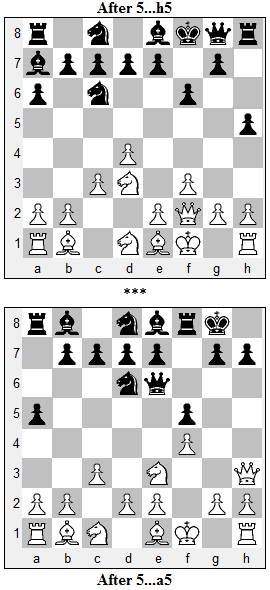Continuing with my copy of the LSS database, I identified games between players rated 2000 or more. Of the 7308 games on file, a little more than 100 games met this criteria. The reason is that until a year ago, LSS offered only one type of chess960 event, where players of all strengths are placed into the next event -- first come, first served -- until the available places are filled. Then the next event is opened. This often leads to rating mismatches with differences of 1000 points or more. The site now offers annual 'LSS Chess960 Championships', but the 2012 edition has only completed the preliminary stage, where there was just a single pairing of 2000+ players. We should see more games between top players as the semifinal and final stages complete.
All of the LSS events use the parallel game format, where opponents play two games using the same start position, one with White and one with Black. I've discussed this format in several posts, where the most recent was Opening Logic Sets the Course.
For this current post I chose a game played last year in an event named FO-2012-0-00316. One player was rated 2335, the other 2175, and they were assigned SP456 RBNNBKQR as the start position. The following diagram shows the position after five moves in both games.
In the top diagram, the initial moves were 1.f3 f6 2.Qf2 a6 3.c3 Ba7 4.d4 Nc6 5.Nd3 h5.

In the bottom diagram, the moves were 1.f4 Nd6 2.c3 f5 3.Qe3 Qe6 4.Qh3 O-O 5.Ne3 a5.
Both games show a curious symmetry of the f-Pawn. In the first game, f2-f3 and ...f7-f6 were played. In the second game, f2-f4 and ...f7-f5 were played. Can you tell from looking at the diagrams which player was higher rated?

No comments:
Post a Comment